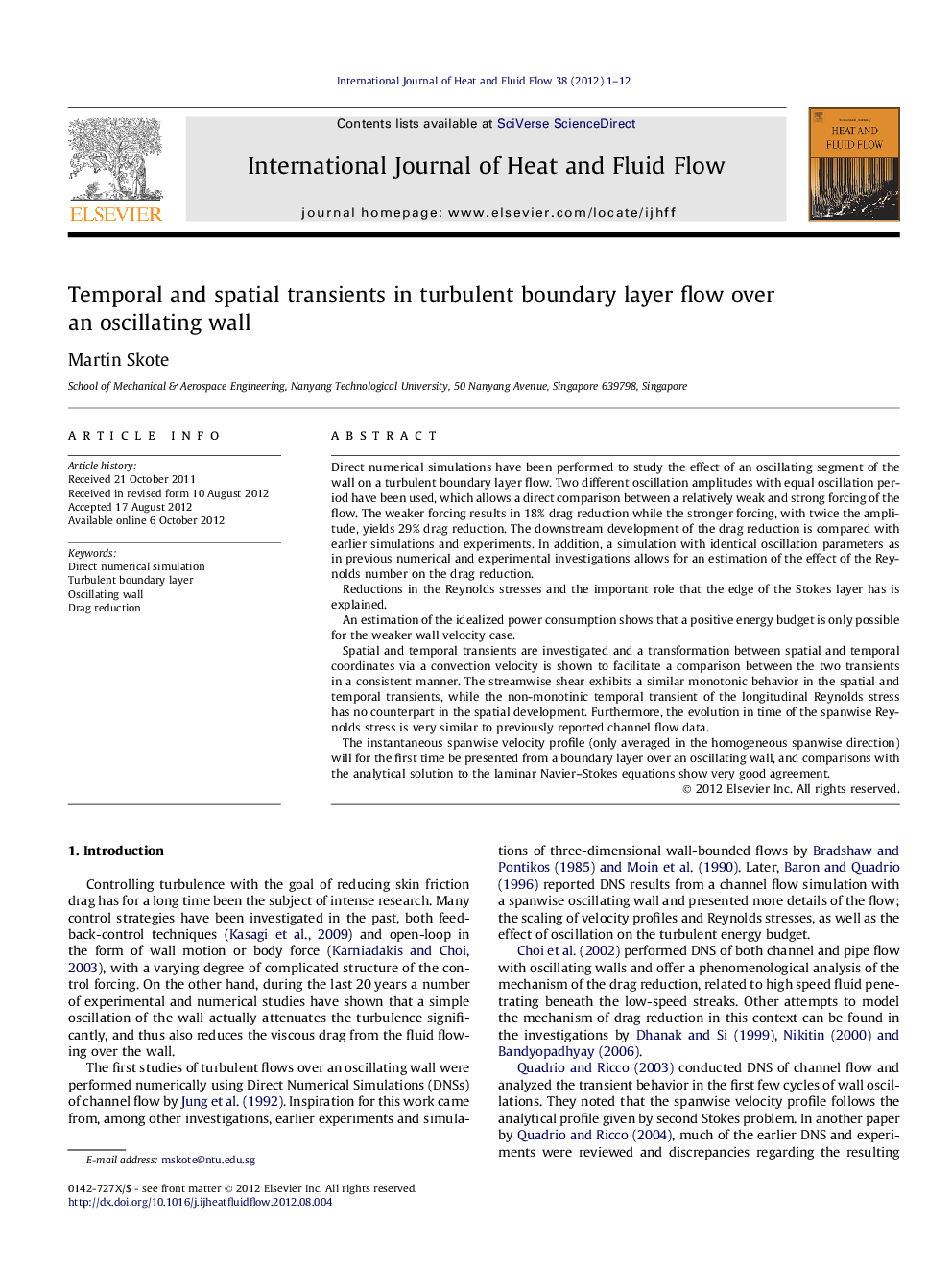| کد مقاله | کد نشریه | سال انتشار | مقاله انگلیسی | نسخه تمام متن |
|---|---|---|---|---|
| 655805 | 1457643 | 2012 | 12 صفحه PDF | دانلود رایگان |

Direct numerical simulations have been performed to study the effect of an oscillating segment of the wall on a turbulent boundary layer flow. Two different oscillation amplitudes with equal oscillation period have been used, which allows a direct comparison between a relatively weak and strong forcing of the flow. The weaker forcing results in 18% drag reduction while the stronger forcing, with twice the amplitude, yields 29% drag reduction. The downstream development of the drag reduction is compared with earlier simulations and experiments. In addition, a simulation with identical oscillation parameters as in previous numerical and experimental investigations allows for an estimation of the effect of the Reynolds number on the drag reduction.Reductions in the Reynolds stresses and the important role that the edge of the Stokes layer has is explained.An estimation of the idealized power consumption shows that a positive energy budget is only possible for the weaker wall velocity case.Spatial and temporal transients are investigated and a transformation between spatial and temporal coordinates via a convection velocity is shown to facilitate a comparison between the two transients in a consistent manner. The streamwise shear exhibits a similar monotonic behavior in the spatial and temporal transients, while the non-monotinic temporal transient of the longitudinal Reynolds stress has no counterpart in the spatial development. Furthermore, the evolution in time of the spanwise Reynolds stress is very similar to previously reported channel flow data.The instantaneous spanwise velocity profile (only averaged in the homogeneous spanwise direction) will for the first time be presented from a boundary layer over an oscillating wall, and comparisons with the analytical solution to the laminar Navier–Stokes equations show very good agreement.
► Drag reduction is 18% and 29% respectively for two different strengths of forcing.
► The Reynolds number dependency is investigated.
► Spanwise shear follows the non-harmonic solution to the laminar equations.
► Temporal and spatial transients are related through a coordinate transformation.
► Spanwise Reynolds stress behaves almost exactly as in a channel flow.
Journal: International Journal of Heat and Fluid Flow - Volume 38, December 2012, Pages 1–12